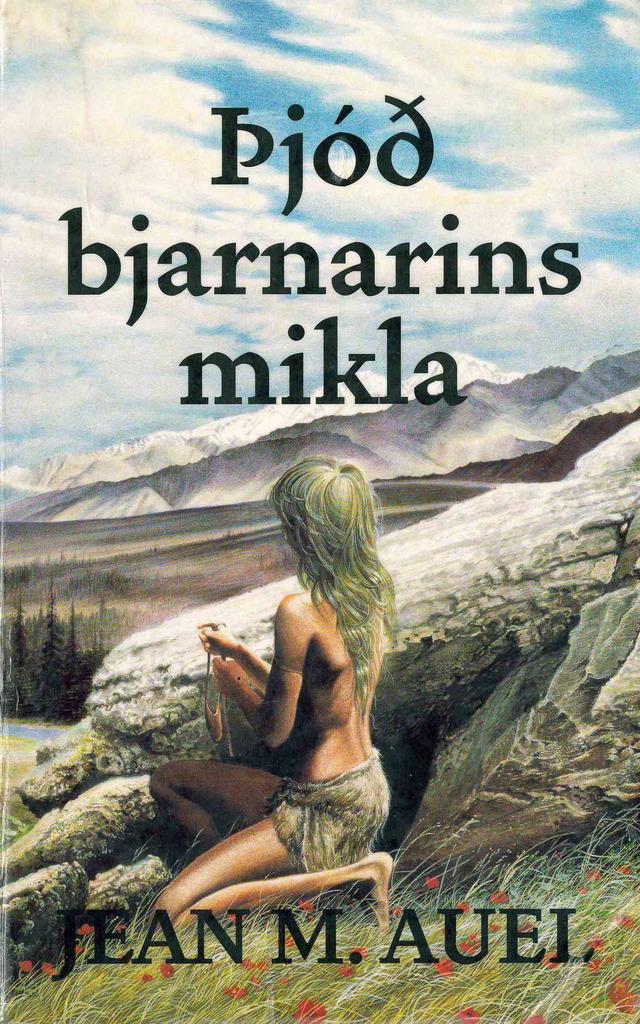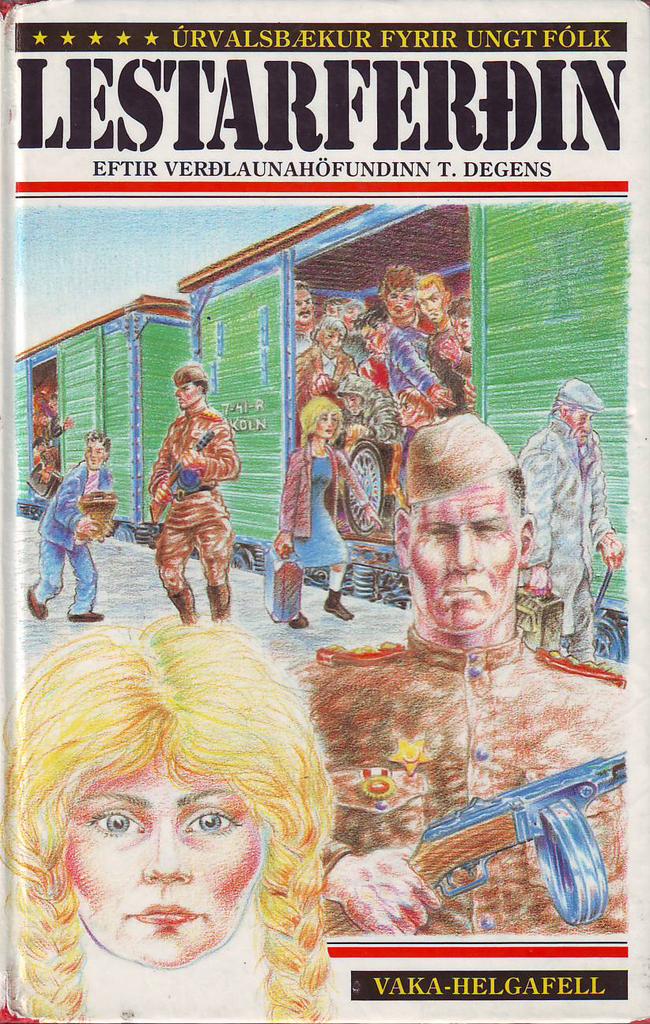Bio
Fríða (Áslaug) Sigurðardóttir was born on December 11, 1940 on the farm Hesteyri in Hornstrandir in the Westfjords of Iceland. She graduated with a Cand. Mag. degree in Icelandic language and literature from the University of Iceland in 1979. She worked as a librarian at the University Library and the American Library in Reykjavik from 1964 – 1970, worked at the faculty of humanities at The University of Iceland from 1971 – 1973, and was a sessional teacher at the University and The Iceland College of Education from 1973 – 1975. After 1978, Fríða dedicated her time to writing.
Fríða Á. Sigurðardóttir's first work was the short story collection Þetta er ekkert alvarlegt (Nothing Serious), published in 1980. She then sent forward novels and short stories, as well as translations of foreign literary works. Her novel, Meðan nóttin líður (Night Watch) from 1990 received the Icelandic Literature Prize in 1991 and The Nordic Council's Literature Prize in 1992. The novel has been translated to English and the Scandinavian languages. Fríða also wrote articles for newspapers and magazines. Her study of the plays by Icelandic playwright Jökull Jakobsson was published in 1980. Her last published work is the novel Í húsi Júlíu (In Julia's House), published in October 2006.
Fríða Á. Sigurðardóttir passed away in Reykjavík on May 7th, 2010.
From the Author
On literature and writing
A thought is buzzing about somewhere in my head. A thought, idea, or possibly just an image. Fuzzy and just about within reach. I know what it wants and I push it aside.
I am having a break, recovering, having just written a book, I am on the mend, I need to fill the void it left behind and I am going away. First I must fulfil a promise I gave long ago, I must write something on literature and writing. Normally I refuse such tasks, especially such unanswerable questions like: "Why do you write?" Or: "What is the book about?" Once I let it slip, when asked by a journalist, that if I were able to describe the book in a single sentence I would not have bothered to write the book. He was not amused. With every year that passes I feel less inclined to express any views on literature. My own writings as well as other peoples. I justify this disinclination with the theory that literature is like love, it is better to enjoy it than to discuss it. The literary theorist I once was has a thing or two to say about that theory, but I do not care to discuss that here.
The insistent idea is pushing to the forefront. This thought, this idea that I for the time being do not want to have anything to do with. Absentmindedly I look recovering up in the dictionary and come across the [Icelandic] word [afturbatapíka, or] recovering virgin. A girl who has had a child on her own so to speak and needs a certain number of years for it to be forgotten and that she will become a virgo intacta again. Was not about seven years for that to happen? How many years does it take to cleanse one self of a story? Of literature? Of this indescribable anticipation and joy that crawls around the body and around this idea that besieges me and becomes more insistent with each day that passes?
Not that I have any interest in such a cleansing. Or that I want to compare childbirth to literature. The comparison that is meant to exist between the two has in my mind always been utterly ridiculous. It probably originated with men. The women picked it up from them. Always such copy cats the women!
But let’s get back to literature and writing.
I liked the woman who asked me to write something about why I write, had that not been the case I would have refused firmly. I would have said: "That is something I do not wish to discuss." But probably I would not have dared to do so. "Everybody writes," she said. A challenge that is hard to withstand. In conjuncture with the everlasting female need to please and the badly disguised vanity of the author. "I write for the money." said William Saraoyan in his senior years. No one in his or her right mind would give that answer in this country.
The image comes closer, I sense muffled voices. This idea, thought, image has even slinked into my dreams. But I am going on my holiday; I want to experience the drama of my own life but not other people’s. But first I must answer the question on literature. About the writing. Rather try to answer it.
So, why do I write?
Because it brings me joy, because work is a virtue and writing a book is a lot of work, because it is an adventure, a journey to the unknown where no one knows what might happen? Or is it a longing to escape the real life? The need to be authoritative possibly? The need to be able to control at least something in this world? Or is it some sort of yearning to be godlike, this passion for creating?
What is this phenomenon that lets you allow this complete surrender of one self? Because that is what happens when one writes a book. Only half of your life is in this reality. You walk a tightrope stretched across two worlds and hope not to fall off.
A being steps from the image, I can not see whether it is a man or a woman. The being shakes itself and seems to look around, then it turns slowly towards me and there is an accusation in its movements, as if it has heard my thoughts, then I seem to hear it say: "It was on New Years Eve?"
But I am going on my holiday!
New Years Eve? What happened on New Years Eve? I am forced to buy a laptop.
Fríða Á. Sigurðardóttir, 2001.
Translated by Dagur Gunnarsson.
About the Author
“The doings of humans in this world”
At the end of the prize-winning novel Meðan nóttin líður (Night Watch; available in English) (1990) the main character of the story, Nína, asks herself: “Hvað verður nú um mig?” (“What is to become of me?”). This according to Fríða Á. Sigurðardóttir is the core of all her writing:
En sannarlega snýst allt heila málið um þessa spurningu í einni eða annarri mynd. Erum við tilbúin til að taka ábyrgð á eigin lífi í öllu ruglinu? Þorum við að vera við sjálf í þessum undarlega heimi sem við lifum í? Göngum við til leiks sofandi eða vakandi? Í raun og veru hef ég alltaf verið að skrifa um það sama, spyrja sömu spurninganna. Leita svaranna í ólíkum viðfangsefnum. “Annaðhvort étur kötturinn fuglinn, eða fuglinn étur köttinn.”
(Vigdís Grímsdóttir ræðir við Fríðu Á. Sigurðardóttur, Tímarit Máls og menningar 1/1991, p. 15.)
(Everything truly revolves around this question in one form or another. Are we ready to accept responsibility for our own lives in all this mess? Do we dare to be ourselves in this strange world we live in? Are we asleep or awake when it comes to it? I have in fact, always been writing about the same thing, and asking the same questions. Looking for the answers in different subject matters. “Either the cat eats the bird, or the bird eats the cat.”)
(Vigdís Grímsdóttir talks to Fríða Á Sigurðardóttir, Tímarit Máls og menningar 1/1991, page 15.)
Here, Fríða Á. Sigurðardóttir herself points out the moralistic content that has truly been a constant in her work ever since she published her first book more than two decades ago - and she has continued to work with the same questions in the books she published since she spoke those words in the interview in 1991.
It is interesting that after the period in Icelandic literature called neo-realism (around 1968) there is a sense of emptiness in Icelandic novels. Here I am alluding to the books of several authors, who cropped up in the seventies and eighties. During this period it was not considered the done thing to be “moralistic” in literature, the norm was to be “literary” rather than “moralistic” and attention was turned to “the joy of storytelling, fun and fantasy”. This was most likely and understandably a normal reaction to the message laden works of the neo-realism. Alongside this development another kind of development was present in Icelandic writing, even if it was not as prominent in the literary discussion which, luckily, is constantly taking place in Iceland. Here we had authors who seemed to reject the nihilism completely and ask searching questions about the responsibility of being a human being, without ramming some message down the throat of the reader. In this context one could mention, besides Fríða Á. Sigurðardóttir, authors like Álfrún Gunnlaugsdóttir, Birgir Sigurðsson, Guðmundur Andri Thorsson, Ólafur Gunnarsson, Ólafur Jóhann Ólafsson and Vigdís Grímsdóttir. One telling aspect of the literary discussion taking place in the seventies and eighties is that these authors where being told off for not being funny enough - although the value of their work was seldom doubted.
Fríða Á. Sigurðardóttir first came forth as a writer in 1980, both as the author of a collection of short stories Þetta er ekkert alvarlegt (It is nothing serious) and as the author of Leikrit Jökuls Jakobssonar (The plays of Jökull Jakobsson), a scholarly essay based on her thesis in Icelandic literature and published in a series called Studia Islandica (nr. 38). Both works received good reviews and it was thought that the author showed promise.
Fríða has not followed up on an academic career (although she has written a handful of literary reviews) but her career as an author has been continuos and it can be said with some justification that that is where she belongs.
The reckoning of a life
Many are of the opinion that each writer’s first work shows an incling of what is to come in his later work, even that the core of an authors work in general can be detected in the first book. It can be said that in the nine short stories in Þetta er ekkert alvarlegt one can find the topics she was later to flesh out in her novels. The title is of course ironic because in the nine short stories Fríða tackles serious matters indeed, e.g. alienation, unhappiness, sexual discrimination, poverty and depression, to name a few. The title is possibly an ironic allution to the general atmosphere in the literary discussion that was taking place in the early eighties, as was discussed previously on these pages.
Þorleifur Hauksson wrote a short piece on Þetta er ekkert alvarlegt in the literary magazine Tímarit Máls og menningar (1/1982) and he claims that the main theme of many of the stories is “some sort of life reckoning” he also points out that “another characteristic” of the stories is “the realistic narrative that the author handles with knowledge”. At the end of his article Hauksson says: “Also there are a few side steps from the frame of realism, ... and they are a promise that the author has a rich source to mine in that area.” (Þorleifur Hauksson. “Aldarfarssögur.” Tímarit Máls og menningar 1/1982, page 117.)
It can easily be stated that the life reckoning is the core of all the later books of Fríða as well as in her first book of short stories. It should be more than enough to mention Meðan nóttin líður (Night Watch) where the main character sits at her mothers deathbed and remembers the stories of a few of her foremothers whilst at the same time she, against her own will, accounts for her own life; or the life reckoning of Tómas Jóhannsson which is the content of the novel Í luktum heimi (In a closed world) (1994). I think that the most interesting evolution in the body of work by Fríða Á. Sigurðardóttir are her experiments with the narrative of realism and the “side steps” one can take within the frame of that narrative. Although realism is a constant that Fríða seems to use as a base for her stories, they frequently break out of the framework of “traditional realism” with constant interplay of inner life and outer reality and also by disolving the border between time and space. In the aforementioned review on Þetta er ekkert alvarlegt by Þorleifur Hauksson, he states that in many of the stories one can read in a nutshell the “biographies” of the characters; in a short and compact text of each short story there is hidden if one looks carefully the story of a whole lifetime. The novels of Fríða Á. Sigurðardóttir, which tally five when this is written, could easilly be described as detailed “life writings” which are told from the point of view of main characters who have reached a turning point in their lives, look back and try to reflect upon their lives as a whole.
The power
In the novel Sólin og skugginn (The sun and the shadow) (1981) Fríða keeps mostly within the framework of social and psychological realism (with the emphasis on the latter). One can see the struggle between realistic narrative and poetic narrative, but the poetic was to gain the upper hand in her latter work. Sólin og skugginn is about the hospitalisation of Sigrún Björnsdóttir who suffers from several symptoms that the doctors have difficulties to diagnose, they lean towards hysteria, even if the source of the symptoms can be traced back to an accident. This is a chronicle of the stuggle between individuals and the system, between patients and doctors, men and women, dream and reality, courage and fear, the will to live and capitulation - and the list could go on. The opposites that are found in the title, Sólin og skugginn (The sun and the shadow) send the message which is supported by all the opposites that are to be found throughout the entire text. The confined scene of action in the book, the hospital, is a world of its own which to begin with is alien to Sigrún but slowly she learns the rules that govern the hospital and how this small world corresponds to society outside the walls of the hospital. Sigrún returns home uncured but she has gained an experience she would not have liked to have missed. Fríða has herself pointed out that she is working with the idea of “power” in this story, (see interview with Vigdís Grímsdóttir, op. cit., page 15), and the imbalance of power is of course crystallized in the patient doctor relationship, where the former one is so to speak under the thumb of the latter who extracts power from his education and general position and holds “all the strings”, whatever the patient may think of his diagnosis and methods of “healing”. This is the experience of Sigrún when doctors diagnose her as “hysterical” (a well known definition made by doctors when dealing with the problems of middle aged women) and she realizes that the imbalance of power she encounters within the walls of the hospital, mirrors society in general - she also likens the hospital to a “giant octopus” and that comparison is hardly made without reason [in Icelandic socety there is talk of a semi-conspiracy of right wing or conservative powers with money which is named “The octopus” because it reaches with many and influential tentacles into most big businesses and institutions of importance].
Love
In her next novel, Eins og hafið (Like the ocean) (1986), one can also find a “society within society”, but at the heart of the tale is an old house made of wood which is in a small seaside village and that house is the foundation for the main pillars of the story. It is interesting to compare Eins og hafið to Dægurvísa (Popular song) (1965) by Jakobína Sigurðardóttir (the sister of Fríða Á Sigurðardóttir) because of the obvious connection between the two novels (other than the family ties of the authors). Both novels are so called collective novels where a group of characters are in the main role rather than one specific main character and in both novels there is a certain house and its inhabitants that form the axel around which the story revolves.
Eins og hafið tells the tale of twelve inhabitants that live in the old decrepid house, there are plans to tear it down to make way for a hotel or a petrol station on the land. These are people of all ages and are as diverse as they are many, but there is one thing that powers all of them in their human struggle, and that is love. And that is the love refered to by the title of the book:
“hún er eins og eldingin, eins og hafið, óskiljanleg og leyndardómsfull, [...] hún gefur engin grið, enga undankomu, því hún er bálið, eldurinn sem lífið brennur í; og sá sem hefur gengið í gegnum bálið verður aldrei samur aftur. (Eins og hafið, 1986, page 95)”
(she is like the lightening, like the ocean, unfathomable and mysterious, [...] she knows no mercy, no escape, because she is the fire, the fire that life burns in; and he who has walked through the fire will never be the same. (Eins og hafið, 1986, page 95)”)
In this story Fríða delves into the interior of love in its many shapes and forms, its victories as well as defeats. As she spins these diverse love stories she builds up an convincing picture of an entier village.
Although all of her previous books were well received I think it is safe to say that with this novel she secured a place among the best and most interesting authors Iceland has known in modern times. It is in Eins og hafið where the poetic style, which surely was present (in some books more than others) in her previous works, blossoms and reaches full maturity. Sigurðardóttir has in this book mastered a personal and powerfull style which later has become one of her trade marks.
Memory and time
The novel Meðan nóttin líður (1990) marked a new chapter in the works of Fríða Á. Sigurðardóttir. One could argue that that novel and the two that followed, Í luktum heimi (In a closed world) (1994) and Maríuglugginn (The Mary window) (1998) formed a stronger link between them than any of her other work. The thematical paralells are so strong that it seems safe to presume that the author had meant these three novels to work as trilogy about the importance of the past in modern times. The contents of all three books are linked with time and memory, these elusive and deceitfull concepts that later on take form in words, or novels, in many and deviously tricky ways. This is the core that hides within all three of these books and even more paralells that are linked to this core will come to light. All three books are about people in a “crisis”. People who have reached some sort of watershed in their lives, people who yearn for more than what their lives have to offer. Nína (Meðan nóttin líður), Tómas (Í luktum heimi), Hildur and Páll (Maríuglugginn) all suffer because of the pointlessness of their existance. They are each in their own way, lost, full of doubt and fear and looking for meaning in their past, hoping that history could enrich their future with the happiness lacking in their present situations.
Despite the strong paralells, these three novels are still different when it comes to plot and characterization. The common denominator is the question: “Who am I?” and that is also the driving force behind the reckoning that all these characters go through. That question must surely be the basis of any reckoning of a persons life, no matter which form it takes. One could also state that each of these three novels is a variation of the same theme, although each book is a strong and independent work. Meðan nóttin líður is the story of four generations of women, this is a story that emphasises the lives of women, female values, female solidarity and discord. At the centre of the book is Nína who is a modern and troubled woman who tries to understand her own life by examining pieces of her mother’s, grandmother’s and great grandmother’s lives while she sits at the deathbed of the first one. Í luktum heimi is on the other hand a man’s story. At the centre of it is Tómas, a middle aged man in the midst of a bad existencial crisis, and the focus point of his memories are his relationships with his brother and father. In Maríuglugginn it is the couple Hildur and Páll who must examine the past to make sense of the present, piece together bits of the past to get an overview and to get a glimpse of the future. Many allutions to Marcel Proust’s famous work In search of time past can be found in Maríuglugginn, they serve the purpous of underlining the thematic foundation that Fríða is working with in all three works.
The moment
“But whatever the result is I keep writing about the world we live in because I feel that I have some things to say about it. I have always been interested in people’s doings in this world. And of utmost importance is the moment, the moment [we live in] and hardly notice.” (See interview with Vigdís Grímsdóttir, op. cit., page 16.)
Fríða Á. Sigurðardóttir began her career with short stories and has published three collections of short stories, in addition to the first one (see beginning of this article): Við gluggann (By the window) (1984) and Sumarblús (Summer blues) (2000). Her short stories have the quality of hinting at much more than they actually say, in other words the true meaning is in the subtext rather in what can be seen on the surface. Rannveig G. Ágústsdóttir wrote in the literary magazine Skírnir that Sigurðardóttir: [writes] for “deep” reading. It is fun enough to swim along the surface of the text, but there is also plenty to dive into. To discover that the reader has to delve into the deep.” (Rannveig G. Ágústsdóttir. Critique of Eins og hafið. Skírnir, spring issue 1987, page 172.) Ágústsdóttir is here discussing two stories in Þetta er ekkert alvarlegt but I think these words could be used for all the stories (both short stories and novels) and they are also a description of Fríða’s main trait as an author. This is of course an important trait in short stories, where the format demands directness and concentration.
In another of her collection of short stories, Við gluggann, it is “cruelty” that is the theme that echoes through most of the stories, they are nine in this volume, and the first story begins with the rallying cry of the followers of Hitler, “Sieg heil”. Cruelty manifests itself in many ways in the stories, not lea t in the relationships of men and women, whether it is the behavioral pattern of a married couple or a case of rape as described in the story “Dagrenning” (Dawn). As is stated in the quote earlier on, it is the doings of people in this world that are the content of Fríða’s stories and in each one she grabs the moment, a short moment in people’s relationships, a moment that can change everything, even if it passes very quickly. Most of Fríða Á. Sigurðardóttir’s stories describe just such a moment, one moment that might seem unobtrusive but always has connotations that reach far beyond itself. This can also be said of her last collection of short stories, Sumarblús, but the tone is much lighter than in the stories in Við gluggann, and here it is the summer and the sun that form the main theme of the book. The title points this out of course, but we should also keep in mind that it points in two directions, because the blues is first and foremost the music of sorrow and loss. The title is of course a remenant of Fríða’s first novel, Sólin og skugginn (The sun and the shadow) and as in that story we have here the contrast of light and darkness as a theme and often they are intertwined in an artfull way in one and the same story.
In the six short stories that are in Sumarblús Fríða Sigurðardóttir reiterates yet again that she trusts the reader to sense the deep that can be found underneath her concise but manyfold text.
© Soffía Auður Birgisdóttir, 2001
Translated by Dagur Gunnarsson
Articles
Articles
Sigríður Albertsdóttir: "Kvinders muligheder"
På jorden 1960-1990, Nordisk kvinndelitteraturhistorie, bind iv, ed. Elisabeth Møller Jensen og fl. København, Rosinante 1997, pp. 230-233
Þórunn Sigurðardóttir: "Fríða Á. Sigurðardóttir (1940- )"
Icelandic Writers. Dictionary of Literary Biography, vol. 293, ed. Patrick J. Stevens, Detroit, Gale 2004, pp. 55-59
See also: Neijmann, Daisy L., ed. A History of Icelandic Literature.
University of Nebraska Press, 2007, pp. 441, 442-3, 504, 542
On individual works
Í luktum heimi (In a Closed World)
Wieselgren, Anne Marie: "Fríða Á. Sigurðardóttir, I en sluten värld"
Gardar 1997, vol. 28, pp. 65
Meðan nóttin líður (While The Night Passes)
Christensen, Robert Zola: "Vi hänger allesammans i navelsträngarna : en præsentation og anmeldelse af Fríða Á. Sigurðardóttirs roman "Medan natten lider", vinder af Nordisk råds litteraturpris 1992"
Gardar 1993, vol. 24, pp. 15-20
Awards
2001 - Honorary Writer’s Salary
1992 - The Nordic Council’s Literature Prize: Meðan nóttin líður (Night Watch)
1991 - DV Newspaper Cultural Prize for Literature: Meðan nóttin líður (Night Watch)
1990 - The Icelandic Literature Prize: Meðan nóttin líður (Night Watch)
1988 - The National Broadcasting Company’s Writer’s Fund
1982 - Award from The Icelandic Writer’s Fund
Nominations
1994 - The Icelandic Literature Prize: Í luktum heimi (In a Closed World)
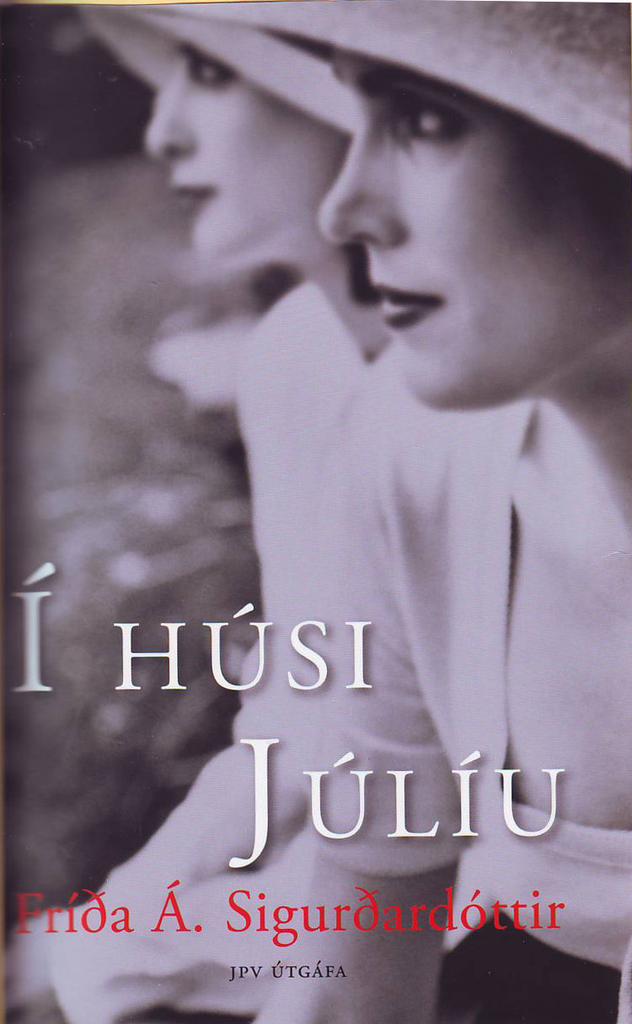
Í húsi Júlíu (In Julia´s House)
Read moreMorgengrauen
Read moreDer Sprung
Read more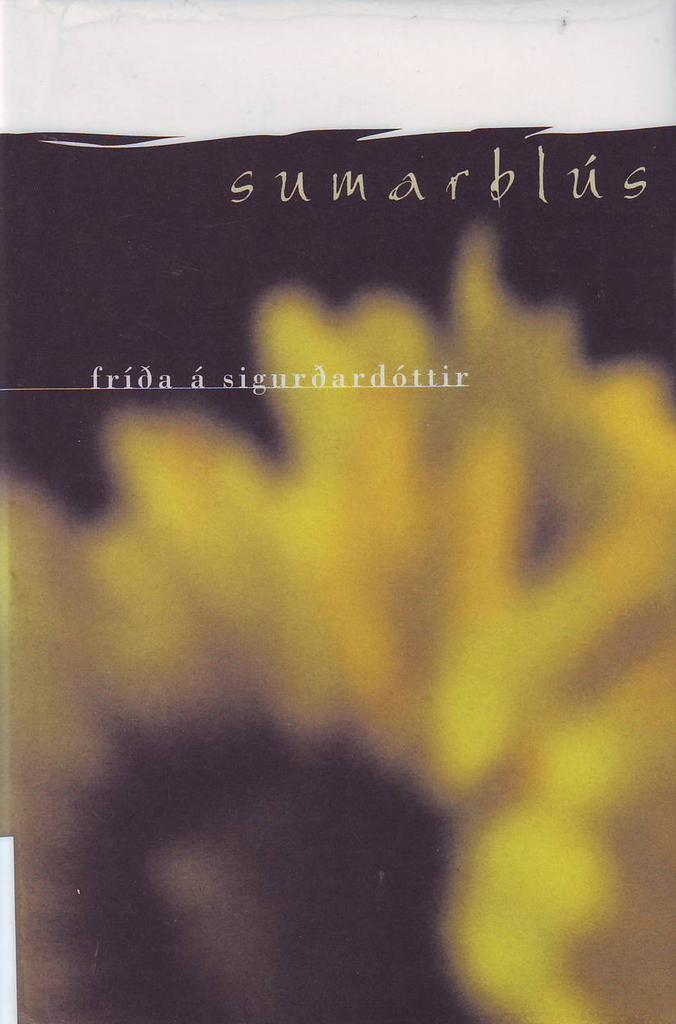
Sumarblús (Summer Blues)
Read moreSmásaga í Wortlaut Island (A short story in Wortlaut Island)
Read more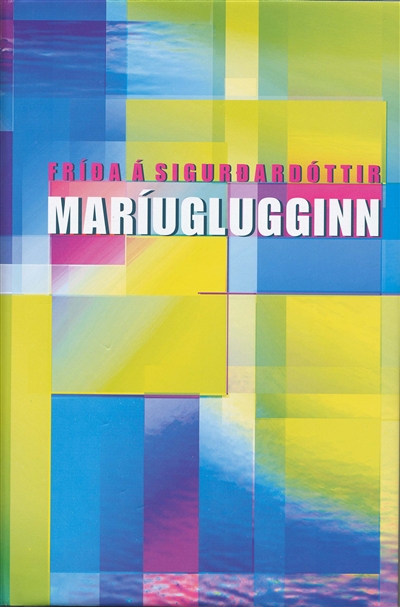
Maríuglugginn (The Maria Window)
Read more
Ninas Geschichte : Roman
Read more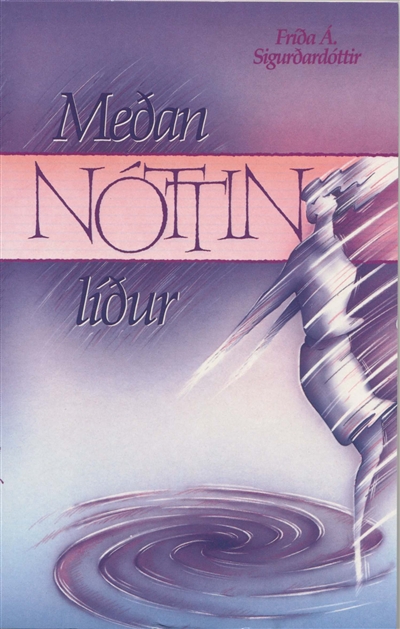
Meðan nóttin líður
Read more
Zatímco plyne noc
Read more


